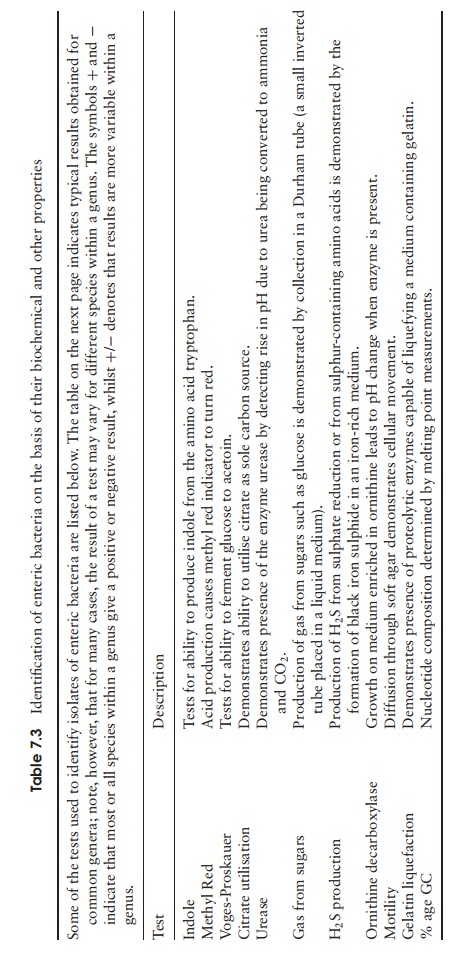Chapter: Essential Microbiology: Procaryote Diversity
Enteric Proteobacteria
Enteric Proteobacteria
This is a large group of rod-shaped bacteria, mostly motile by means of peritrichous flagella, which all belong to the Îł -Proteobacteria. They are facultative aerobes, charac-terised by their ability in anaerobic conditions to carry out fermentation of glucose and other sugars to give a variety of products. The nature of these products allows division into two principal groups, the mixed acid fermenters and the butanediol fermenters (Figure 6.23). All the enteric bacteria test negative for cytochrome c oxidase (see Vibrio and related genera below). In view of their similar appearance, members of the group are distinguished from one another largely by means of their biochemical characteris-tics. An unknown isolate is subjected to a series of tests including its ability to utilise substrates such as lactose and citrate, convert tryptophan to indole, and hydrolyse urea. On the basis of its response to each test, a characteristic profile can be built up for the isolate, and matched against those of known species (see Table 7.3).


The most thoroughly studied of all bacteria, Escherichia coli (E. coli) is a member of this group, as are a number of important pathogens of humans such as Salmonella, Shigella and Yersinia (the causative agent of plague).
Representative genera: Escherichia, Enterobacter
Related Topics